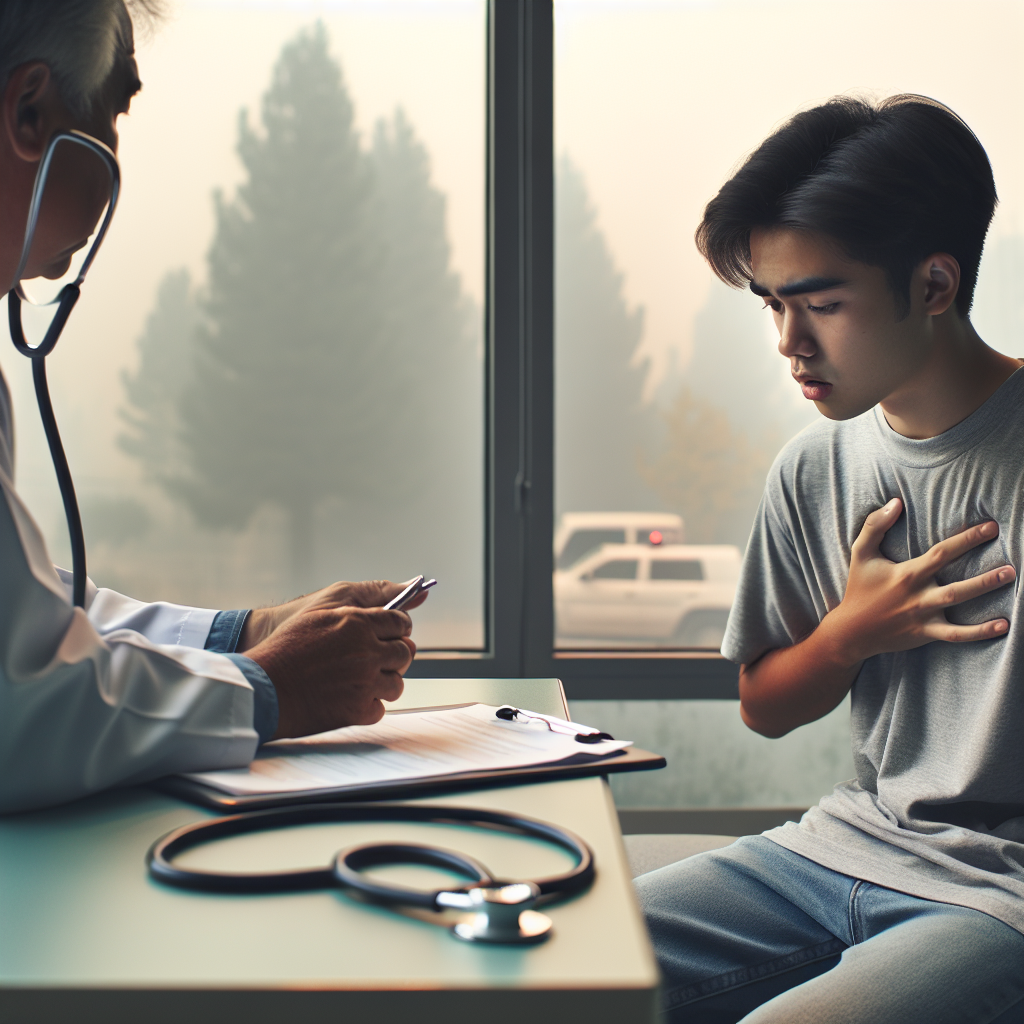
Understanding the Health Impact of Wildfire Smoke and How to Protect Yourself
The Growing Threat of Wildfires in Los Angeles
As wildfires continue to spread across Los Angeles County, the repercussions are being felt by more than 80,000 residents who have been evacuated. The blazes, which ignited on the morning of January 7, 2025, in the Pacific Palisades, have already destroyed thousands of acres fueled by powerful Santa Ana winds, with extreme gusts reaching 80 mph.
In addition to the destruction, smoke from these fires poses significant health risks that many people need to be aware of. For those with pre-existing health conditions, children, and the elderly, the inhalation of wildfire smoke can lead to severe health implications.
Understanding the Components of Wildfire Smoke
According to the U.S. Centers for Disease Control and Prevention (CDC), wildfire smoke is a mix of gases and fine particles like soot, dust, and dirt from burning materials. These particles can easily get lodged in our respiratory system and have harmful health effects, especially for vulnerable populations.
Dr. Ronald Crystal, a pulmonologist at Weill Cornell Medicine, emphasizes that inhaling these particles results in airway inflammation, restricting normal lung function and potentially allowing pollutants to enter the bloodstream, thereby damaging vital organs.
Potential Health Effects of Inhaling Wildfire Smoke
- Irritation of the lungs and airways
- Chest tightness and wheezing
- Fatigue and shortness of breath
- Cardiac issues, such as palpitations and cardiac arrest
- Increased risk of cancer and mental health challenges
Who is Most at Risk?
Not everyone will experience the same level of risk when exposed to wildfire smoke. Those who are healthy may only experience temporary symptoms, such as coughing or throat irritation. However, for certain groups, the risk is much higher:
- Individuals with chronic conditions: asthma, COPD, heart disease, diabetes, or chronic kidney disease
- People with long-term COVID-19 effects
- Pregnant individuals, children, and the elderly
- First responders directly working to contain the wildfires
Signs You Need Medical Attention
If you live near the wildfires and experience any of the following symptoms, seek medical attention promptly:
- Wheezing or a whistling sound during breathing
- Severe chest pain or tightness
- Heart palpitations or irregular heartbeat
- Difficulty breathing or shortness of breath
- Headaches, dizziness, or severe sore throat
Special Considerations: Pregnant Individuals and Children
Pregnancy and Wildfire Smoke
Pregnant people are particularly vulnerable to the effects of wildfire smoke, which can cause adverse pregnancy outcomes or premature birth according to Dr. Barbara Mann from Mount Sinai-National Jewish Respiratory Institute. Protective measures include staying indoors and wearing NIOSH-approved respirator masks if venturing outside.
Babies and Young Children
Children, especially toddlers and babies, are at higher risk due to their small airways. It is advisable to evacuate young children from high-risk areas and keep them indoors as much as possible. Respirator masks like N95s are generally not recommended for children under the age of two, as they might not fit properly.
Preventative Measures for Everyone
Even if wildfires haven’t directly affected your area yet, you can take steps to minimize your risk:
- Familiarize yourself with local evacuation routes and guidelines.
- Keep emergency supplies ready, including N95 masks.
- At home, keep doors and windows closed and use air purifiers.
- Set your car’s air conditioning to recirculation while driving to prevent external air intake.
- Avoid indoor activities that can pollute the air, such as candle-burning and cooking with gas stoves.
Monitoring Air Quality and Response
Check local air quality indexes regularly using smartphone apps or online resources. Adjust your activities accordingly, especially on days when air quality is poor. If you must go outside, ensure everyone over the age of two wears an approved mask covering both nose and mouth.
Awareness, preparation, and keen observation of symptoms can significantly mitigate the health risks associated with wildfire smoke. Stay informed and proactive in your safety measures to protect yourself and your loved ones during wildfire events.
Source: https://www.today.com/health/news/breathing-wildfire-smoke-rcna186792


Your point of view caught my eye and was very interesting. Thanks. I have a question for you.
Thanks for sharing. I read many of your blog posts, cool, your blog is very good.
naturally like your web site however you need to take a look at the spelling on several of your posts. A number of them are rife with spelling problems and I find it very bothersome to tell the truth on the other hand I will surely come again again.
You’re so awesome! I don’t believe I have read a single thing like that before. So great to find someone with some original thoughts on this topic. Really.. thank you for starting this up. This website is something that is needed on the internet, someone with a little originality!